- Home›
- Healthy Living›
- 9 Yoga Asanas That Will Help To Strengthen Your Immunity And Flexibility
9 Yoga Asanas That Will Help To Strengthen Your Immunity And Flexibility
By: Priyanka Maheshwari Wed, 27 Sept 2023 11:26:20
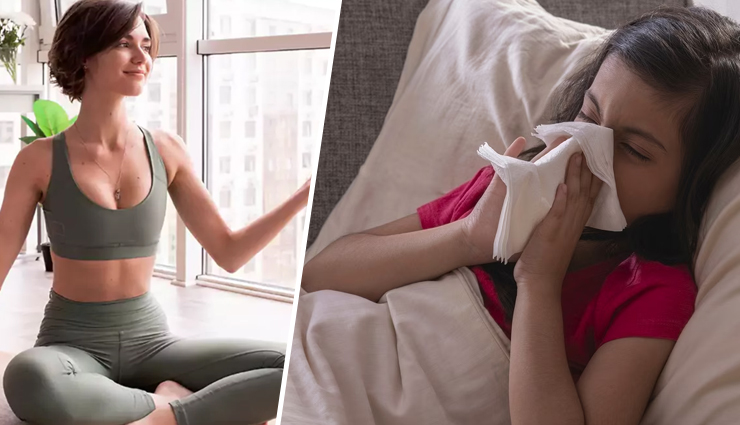
Attempt to reach your toes with your hands while keeping your knees straight. If you find this challenging, it indicates a need to enhance your flexibility. Have you considered trying yoga to address this? Yoga is a highly effective method for maintaining flexibility in your limbs, joints, and back, and it can also bolster your immune system. Wondering which yoga poses to explore? In this article, we'll explore nine impactful poses that can enhance both your flexibility and immunity. Dedicate just 15 minutes a day, and you'll witness the results for yourself. Be sure to give them a try!
You're probably aware that leading a sedentary lifestyle can cause your limbs to become stiff. You may have even told yourself that you should exercise or engage in some stretching routines to increase your flexibility. But do you truly understand what flexibility entails?
Flexibility, often referred to as limberness, encompasses a broad range of motion or mobility within individual joints or across all joints. It also contributes to elongating the muscles that span these joints, facilitating bending movements.
Flexibility is of paramount importance because when our limbs and muscles don't move through their complete range of motion, they can become rigid, leading to various problems, with pain often being the initial symptom.
Immunity is a critical component in warding off illnesses and health issues. It represents the body's ability to construct a protective barrier against harmful microorganisms, preventing their entry. Immunity not only serves as a defense against these invaders but also eradicates pathogens. Moreover, it possesses the innate capacity to develop specific resistance against particular pathogens.
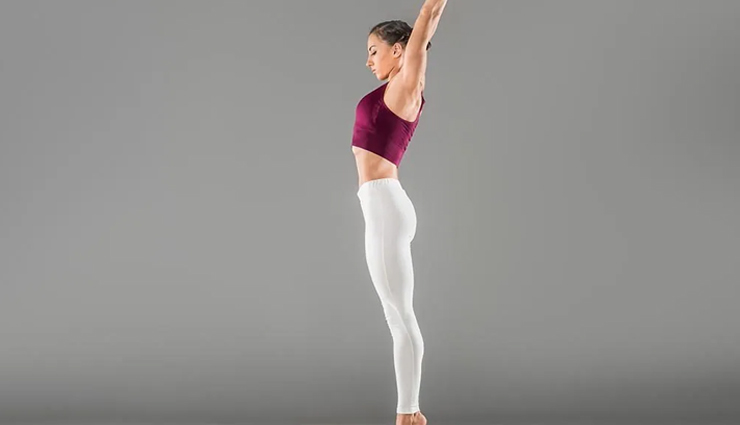
# Tadasana
Tadasana, also known as Mountain Pose, is a foundational yoga pose that can contribute to both immunity and flexibility when incorporated into a regular yoga practice. While it may not directly boost immunity like certain immune-boosting foods or exercises, yoga, including Tadasana, can support overall well-being, which in turn can enhance the immune system. Additionally, Tadasana helps with flexibility and posture.
Steps:
- Stand upright with feet together.
- Align heels and toes, keeping them close or touching.
- Engage thigh muscles by lifting kneecaps.
- Slightly tuck the tailbone for a neutral pelvis.
- Lengthen the spine, imagining it being pulled upward.
- Arms hang naturally by your sides, palms facing thighs.
- Keep shoulders relaxed.
- Maintain focused, deep breathing.
- Close eyes or have a soft gaze.
- Hold the pose for 30 seconds to a minute or longer.
- To release, gently lower arms and step feet apart.
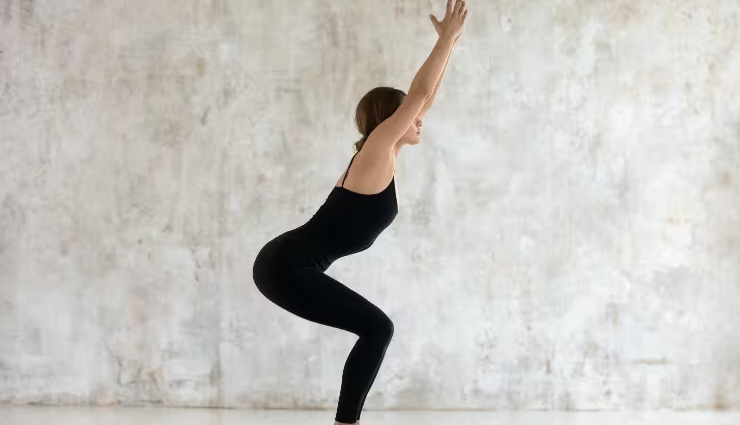
# Utkatasana
Utkatasana, also known as Chair Pose or Fierce Pose, is a yoga pose that can contribute to both immunity and flexibility when practiced regularly. It is known for its ability to engage multiple muscle groups while also promoting focus and balance. Here are the steps to perform Utkatasana:
Steps:
- Start in Tadasana (Mountain Pose) with your feet together and arms at your sides.
- Inhale deeply and as you exhale, engage your core muscles.
- On your next inhalation, raise your arms overhead, palms facing each other, and keep your arms parallel to each other.
- Exhale and bend your knees, as if you are sitting back into an imaginary chair. Ensure your knees are aligned with your ankles, and your thighs are as parallel to the floor as possible.
- Keep your spine long and your chest lifted. Avoid rounding your back.
- Shift your weight back slightly into your heels, but keep your toes grounded.
- Engage your core muscles to support your lower back.
- Gaze straight ahead or slightly upward, and maintain steady, deep breaths.
- Hold the pose for 30 seconds to one minute, or as long as you are comfortable.
- To exit the pose, inhale and straighten your legs, coming back to a standing position with your arms at your sides.
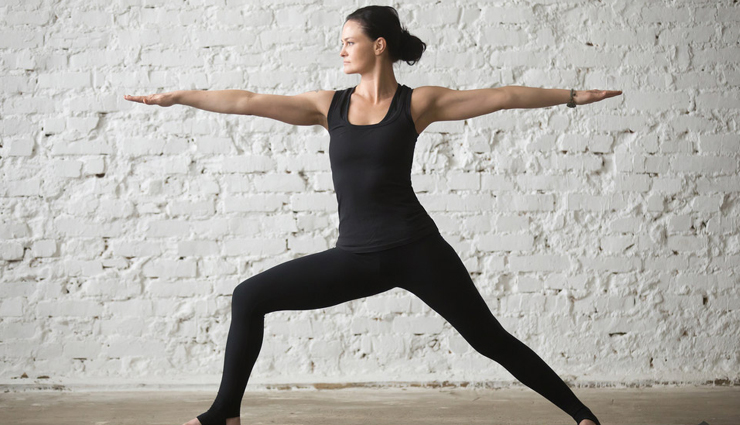
# Virabhadrasana II
Virabhadrasana II, also known as Warrior II Pose, is a yoga asana that can contribute to both immunity and flexibility when practiced regularly. This pose is excellent for strengthening the lower body while also improving flexibility in the hips and legs. Here are the steps to perform Virabhadrasana II:
Steps:
- Start in Tadasana (Mountain Pose) at the top of your yoga mat, with your feet together and arms at your sides.
- Step your left foot back, about 3 to 4 feet, keeping the feet aligned heel to heel or slightly wider.
- Rotate your left foot out at a 90-degree angle, so it points to the side of the mat. Your right foot should be pointing forward.
- Inhale and raise your arms out to the sides, parallel to the floor, with your palms facing down. Your arms should be at shoulder height.
- Exhale and bend your right knee, bringing it directly over your right ankle. Ensure your knee is in line with your second toe. Your thigh should be as close to parallel to the floor as possible.
- Keep your torso upright and gaze over your right fingertips, maintaining a steady, relaxed breath.
- Engage your core muscles to support your lower back.
- Press through the outer edge of your left foot and keep your left leg straight and strong.
- Hold the pose for 30 seconds to one minute, or as long as you are comfortable.
- To release, straighten your right leg, lower your arms, and step your feet together back into Tadasana.
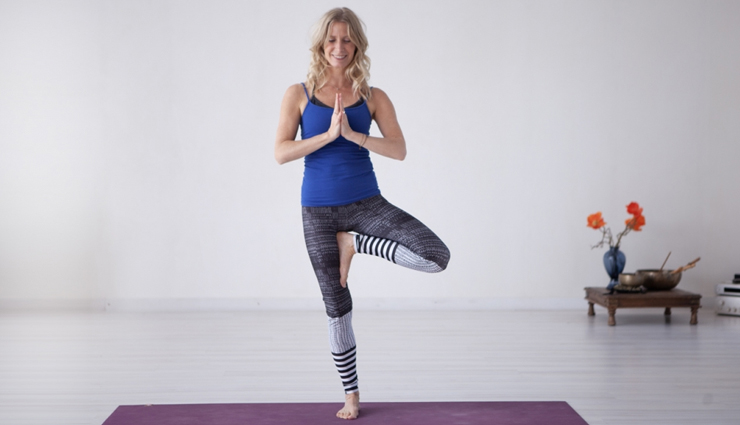
# Vrksasana
Vrksasana, also known as Tree Pose, is a yoga asana that can contribute to both immunity and flexibility when practiced regularly. This pose focuses on balance and stability, and it also helps stretch and strengthen various muscle groups. Here are the steps to perform Vrksasana:
Steps:
- Start in Tadasana (Mountain Pose) with your feet together and arms at your sides.
- Shift your weight onto your right foot, grounding it firmly into the floor.
- Begin to lift your left foot off the ground, bending your left knee.
- Reach down with your left hand and hold your left ankle or shin.
- Carefully place the sole of your left foot against the inner right thigh. Avoid placing it against the knee joint. Instead, aim for the upper thigh or calf.
- Find your balance by engaging your core and focusing on a point in front of you. This is your Drishti, and it will help you maintain balance.
- When you feel stable, bring your palms together in a prayer position at your chest, or you can extend your arms overhead with your palms facing each other.
- Keep your shoulders relaxed and your chest open. Maintain a steady and deep breath.
- Hold the pose for 30 seconds to one minute, or as long as you are comfortable.
- To release, gently lower your left foot back to the floor, return to Tadasana, and repeat on the other side
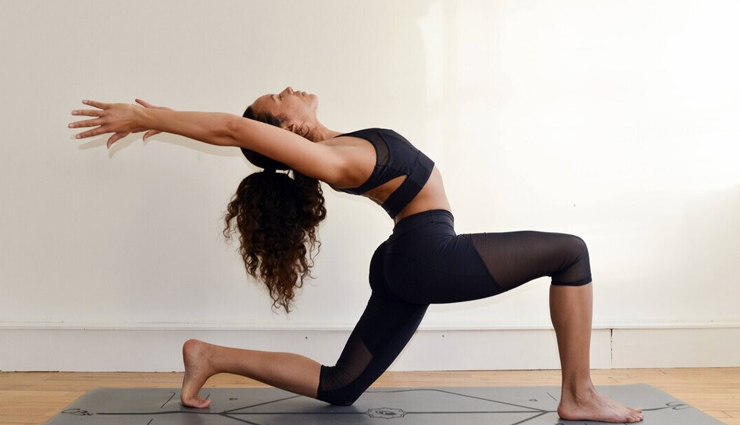
# Anjaneyasana
Anjaneyasana, also known as Low Lunge or Crescent Moon Pose, is a yoga asana that can contribute to both immunity and flexibility when practiced regularly. This pose focuses on stretching and strengthening various muscle groups while also promoting balance and concentration. Here are the steps to perform Anjaneyasana:
Steps:
- Begin in a tabletop position on your hands and knees (Tabletop Pose).
- Step your right foot forward between your hands. Place your right foot flat on the ground with your knee directly above your ankle.
- Extend your left leg straight back, lowering your left knee to the mat. Point the top of your left foot downward.
- Align your hips so that they are facing forward.
- Inhale and raise your arms overhead, reaching up toward the sky. Keep your palms facing each other, or you can bring your palms together in a prayer position.
- Engage your core muscles to support your lower back, and keep your chest open.
- Gently tilt your pelvis forward to deepen the stretch in your hip flexors and groin.
- Maintain a steady and deep breath.
- Hold the pose for 30 seconds to one minute, or as long as you are comfortable.
- To release, lower your hands to the mat, step your right foot back to the tabletop position, and repeat on the other side.
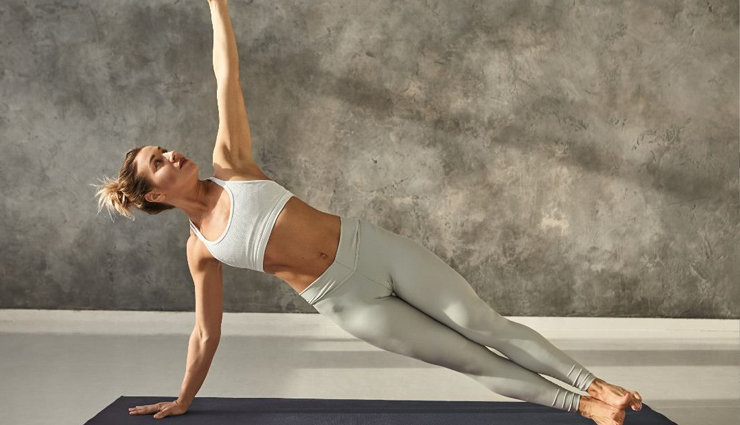
# Vasisthasana
Vasisthasana, also known as Side Plank Pose, is a challenging yoga asana that can help improve both immunity and flexibility when practiced regularly. This pose focuses on building strength and balance while also engaging the core muscles. Here are the steps to perform Vasisthasana:
Steps:
- Begin in a high plank position with your hands placed directly beneath your shoulders and your legs extended straight behind you. Your body should form a straight line from head to heels.
- Shift your weight onto your right hand and the outer edge of your right foot.
- Rotate your body to the left, stacking your left foot on top of your right foot. Your body should now be in a side plank position, with your left hand reaching toward the ceiling.
- Engage your core muscles to maintain balance, and keep your body in a straight line.
- Extend your left arm toward the ceiling, with your fingers pointing upward. Your gaze can be directed toward your left hand or straight ahead.
- Hold the pose for 15-30 seconds, or longer if you can maintain proper form and balance.
- To release, lower your left hand and return to the high plank position.
- Repeat the pose on the other side, shifting your weight to your left hand and stacking your right foot on top of your left foot.
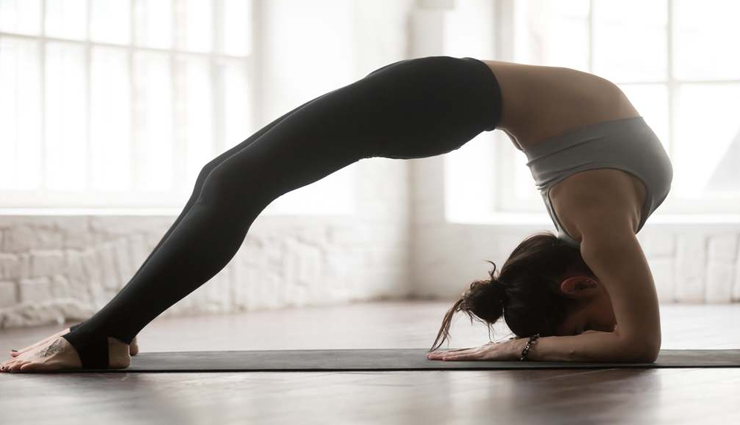
# Setu Bandhasana
Setu Bandhasana, also known as Bridge Pose, is a yoga asana that can contribute to both immunity and flexibility when practiced regularly. This pose primarily focuses on strengthening the back and gluteal muscles while also gently stretching the chest, neck, and spine. Here are the steps to perform Setu Bandhasana:
Steps:
- Begin by lying flat on your back with your knees bent and your feet hip-width apart. Your arms should be resting alongside your body, palms facing down.
- On an inhalation, press through your feet and lift your hips toward the ceiling. At the same time, press your arms and shoulders into the mat to lift your chest.
- Continue to lift your hips and chest until your thighs and torso are in a straight line, creating a bridge-like shape with your body.
- Keep your knees directly above your ankles, and avoid letting your knees splay outward.
- Interlace your fingers beneath your body, rolling your shoulders underneath you to create a stable base of support for your bridge.
- Gently squeeze your glutes and engage your core muscles to maintain the lift in your hips.
- Keep your neck long and relaxed, and maintain a steady and deep breath.
- Hold the pose for 30 seconds to one minute, or as long as you are comfortable.
- To release, unclasp your hands and slowly lower your spine and hips back to the mat, one vertebra at a time.

# Matsyasana
Matsyasana, also known as Fish Pose, is a yoga asana that can contribute to both immunity and flexibility when practiced regularly. This pose focuses on opening the chest and throat while also engaging the back muscles. Here are the steps to perform Matsyasana:
Steps:
- Begin by lying flat on your back with your legs extended and your arms resting alongside your body, palms facing down.
- Place your hands, palms down, underneath your hips, with your elbows tucked in close to your body.
- On an inhalation, press your forearms and elbows into the mat, lifting your chest and upper back off the floor. This will create an arch in your back.
- Gently tilt your head backward and let the top of your head rest on the floor. Your chest should be elevated, creating a curve in your spine.
- Engage your core muscles to support your lower back and hips.
- You can keep your legs extended or bend your knees to bring your feet closer to your buttocks, depending on your comfort level.
- Press through your elbows and forearms to lift your chest even higher, and continue to breathe deeply and steadily.
- Hold the pose for 15-30 seconds, or as long as you are comfortable.
- To release, lower your chest and head back to the mat and extend your legs.

# Balasana
Balasana, also known as Child's Pose, is a restful yoga asana that can help reduce stress, promote relaxation, and support flexibility. While it may not directly boost immunity, the reduction of stress can indirectly benefit the immune system. Here are the steps to perform Balasana:
Steps:
- Begin by kneeling on the floor with your big toes touching and knees hip-width apart.
- Sit back on your heels and make sure your buttocks are resting on your heels.
- On an exhalation, lower your torso forward between your thighs.
- Your forehead should rest on the mat. If this is uncomfortable, you can place a cushion or folded blanket under your forehead.
- Extend your arms forward and place your palms flat on the mat. Your arms should be shoulder-width apart.
- Allow your chest to sink toward the floor, and relax your shoulders.
- Keep your focus on your breath. Take slow, deep breaths, inhaling through your nose and exhaling through your mouth or nose.
- Feel the stretch along your spine as it lengthens, and the gentle opening in your hips.
- Hold the pose for as long as you like, ideally for at least 1-2 minutes or longer for a deeper sense of relaxation.
- To release, gently walk your hands back toward your body, using your hands to support yourself as you sit up.





